Cybernetic Analysis for Stocks and Futures: Cutting-Edge DSP Technology to Improve Your Trading
$26.83
| Author(s) | |
|---|---|
| Format |
|
| Pages |
275 |
| Publication Year |
2004 |
Cybernetic Analysis for Stocks and Futures promises to bring magic to the art of trading by introducing wholly new digital signal-processing techniques. The application of digital signal processing offers the advantage of viewing old problems from a new perspective. The new perspective gained by digital signal processing has led me to develop some profoundly effective new trading tools. The advances in trading tools, along with the continuing advancements in hardware capabilities, virtually ensure the continued application of digital signal processing in the future. Traders who master the new concepts, therefore, will find themselves at a great advantage when approaching the volatile market of the twenty-first century. If you like code, you will love this book. Every new technique, indicator, and automatic trading system is defined in exquisite detail in both EasyLanguage code for use in TradeStation and in eSignal Formula Script (EFS) code. They are also available as compiled DLLs to be run in NeuroShell trader.
In Cybernetic Analysis for Stocks and Futures, noted technical analyst John Ehlers continues to enlighten readers on the art of predicting the market based on tested systems. With application of his engineering expertise, Ehlers explains the latest, most advanced techniques that help traders predict stock and futures markets with surgical precision. Unique new indicators and automatic trading systems are described in text as well as Easy Language and EFS code. The approaches are universal and robust enough to be applied to a full range of market conditions.
Contents:
- The Fisher Transform
- Trends and Cycles
- Trading the Trend
- Trading the Cycle
- The CG Oscillator
- Relative Vigor Index
- Oscillator Comparison
- Stochasticization and Fisherization of Indicators
- Measuring Cycles
- Adaptive Cycle Indicators
- The Sinewave Indicator
- Adapting to the Trend
- Super Smoothers
- Time Warp—Without Space Travel
- Evaluating Trading Systems
- Leading Indicators
- Simplifying Simple Moving Average Computations
Cybernetic Analysis for Stocks and Futures: Cutting-Edge DSP Technology to Improve Your Trading By John F. Ehlers pdf
19 reviews for Cybernetic Analysis for Stocks and Futures: Cutting-Edge DSP Technology to Improve Your Trading
Clear filtersOnly logged in customers who have purchased this product may leave a review.

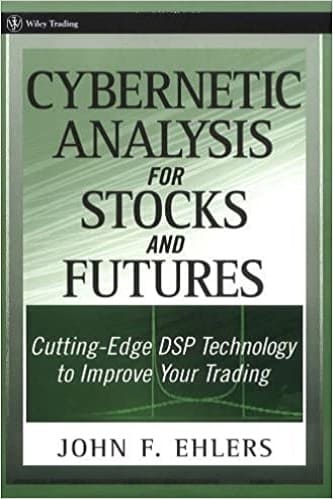

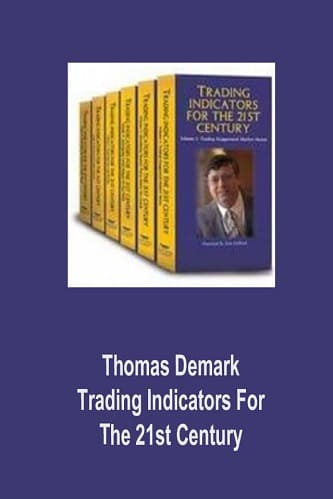
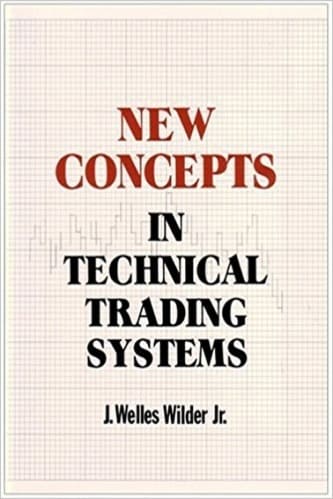

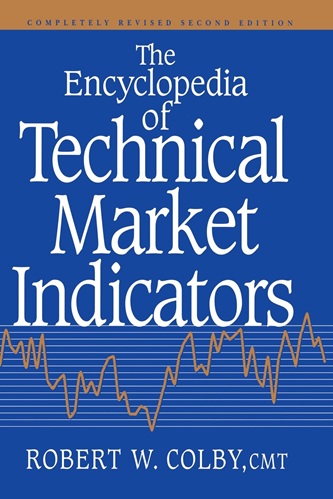
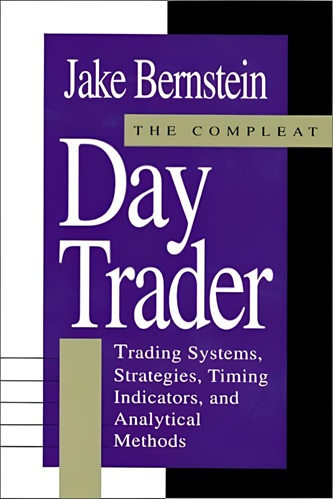

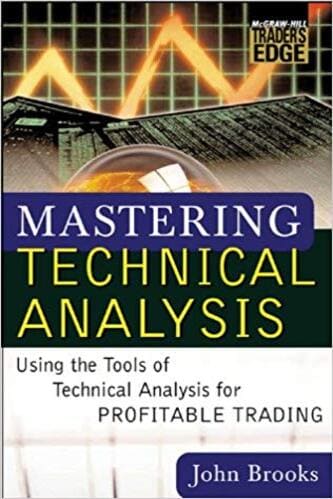
Emani Costa (verified owner) –
A book that worth traders and TradeStation users to look out for. A lot of interesting coding that worth explore
Reuben Morrison (verified owner) –
This is a book clear and very easy to read, for me as physics research, and to my development is very useful.
Strongly recommended.
Chandler McKenzie (verified owner) –
I have been trading for nearly 10 years now and have spent countless amount of time and money on books, systems, software and must say this the best book I have come across. With little creativity one can easy adopt ideas from this book to come up with a profitable mechanical system.
Jeffery Proctor (verified owner) –
John Ehlers newest title is sure to make even the brightest of brain surgeons quiver for fear of closing the renal artery prior to completing the operation. Other reviewers may diss this author but his latest book truly reaches for the stars and makes it. The chapters while short, are to the point and exquisitely illustrate the concept being taught. If you are new to trading systems the shortness of the explanations may be too short but for experienced traders and developers of trading systems they are long enough.
Aspects of many indicators are reviewed with fresh insight added for several new systems not talked about in print before. Removing the lag is the traders dream. Many of the indicators shown do work although errata in the code does spoil some of the implementations given. Ehlers has provided for the keener updates on his website that corrects the mistakes, kudos here for doing the right thing.
Overall Ehlers has done it again and this book should be a staple in any traders library. As for the wannabees wanting all the answers and sure fire methods, choose brain surgery as your career option. No one said trading would be easy but Ehlers has given more toolsets that a successful trader can use in a concise to the point book.
Scott Dunn (verified owner) –
This is the second book of John Ehlers, a well-established pioneer in cycles and trend analysis for the technical analysis of stock price behavior. It is for advanced analysis, and it is a sequel to his classic book of “Rocket Science for Traders”. You do need a math aptitude and some programming experience to get the maximum benefit of both books. John also offers eratta and corrections for minor typos in the formulas as well at his Mesa website.
Those who find this book of interest might also check on John Bollinger’s classic book “Bollinger on Bollinger Bands”, Steve Achelis’ book on “Technical Analysis from A to Z”, Steve Nison’s book on “Japanese Candlestick Charting Techniques”, and Martin Pring’s “Technical Analysis Explained”, Paul Murphy’s “Technical Analysis of the Financial Markets”, and “Technical Analysis of Stock Trends” by Edwards and MaGee. This is not a complete list, but a good start.
Remember that no single book offers the Holy Grail of investment. Stay objective to balancing your background, because investing mistakes can be the most expensive education you will ever have.
Dalary Villalobos (verified owner) –
As an aspiring quant, this is my all-time favorite book on the subject.
The day I discovered his algorithms and principles on applying DSP to the financial markets, I felt like a door I never knew existed opened, and my universe just expended 10 fold.
I have used and derived his algorithms for more than 5 years now, using them in my research, and in my trading, with great results.
The book is pricey, but worth every penny.
Buy without hesitation, and your mind will be blown.
Anais Watson (verified owner) –
John Ehlers new book covers much of the same ground but goes beyond his previous book Rocket Science for Traders. Again the reader is given the explanations and theory for his indicators, smoothers and systems along with the Easy Language code for use in the Tradestation platform.
These indicators can be used as presented or can be easily adapted and combined with countless other indicators that a trader may currently be using. Certainly, the goal of any trader is to identify market tops or bottoms or at least to determine if markets are trending, behaving cyclically or entering a period of sideways or volatile movement. These indicators, alone or combined with others, can help one achieve that goal.
The reviewers of his previous book that had negative comments I believe, for the most part, missed the point entirely as it concerns John Ehlers subject matter and style. Hence, I am concerned that they will also make the same mistake when considering this book. Some believed the analysis was sophmoric while others were concerned with advanced theoretical questions concerning the mathematics presented. Since traders come from all backgrounds books like these need to be written to appeal to as many of them as possible. An electrical engineer will understand the concepts and why they might apply to equity and commodity markets and then can make any changes he/she sees fit with the code. Other readers that understand the problems with trading in trending vs non-trending markets can skip the DSP discussions and immediately use the indicators presented or use the code that determines cycle length to make their own indicators much more responsive to market conditions. Theoretical arguments aside, even the simple indictors included in this book take one way beyond the world of simple moving averages and stationary stochastics.
If nothing more, anyone burning the midnight oil searching for a way to beat the markets will be given endless, state-of-the-art ideas to keep him busy for a long time.
Reese Espinoza (verified owner) –
If I had the choice of picking just one book on TA, it would be this one!
The new technical indicators developed in this book are far superior to the traditional indicators like Exponential and Simple Moving Averages, RSI, Stochastics etc.
I don’t have TradeStation, but the source-code for the indicators are well explained, so I translated TradeStation code to my Java based system in no time.
Basically the book deals with the marked using fairly advanced math for splitting the data in a trend-mode and cycle-mode. Traditional methods of smoothing the data using Simple/Exponential Moving averages are not bad, but they filter the data relatively poorly, so that there is a “leak” of higher frequencies into the result, giving the familiar whip-saws. To reduce the whip-saws, one is stuck with sometimes an unacceptable lag. For comparison, one of the technical indicators in the book, the Instantaneous Trendline, by applying more advanced mathematical filtering, cuts down on the whip-saws, but has virtually no lag!
This is just one example of the many new (revolutionary, I would say) ways of looking at marked data.
Of the oscillators I have implemented so far the Stochastic CyberCycle, but this togheter with the Instantaneous Trendline are themselves so good that I have dumped my usual EMAs, MACDs,
etc from my charts.
I’m really looking forward to the sequel of the book (if there will be one).
Zuri Wong (verified owner) –
The ideas are great, but not sure if they have practical application. I tried the Smoothed Adaptive Momentum Strategy and it really gives poor results, huge drawdowns for SPY, negative results with DIA, MDY, and SMH, even without transaction costs. If I optimize it for the training dataset, it performs badly on the test dataset. The Fisher Transform of normalized prices has definitely very sharp turning points, but backtesting shows the tendency to overtrade and has negative results for major indexes, without transaction costs.
Zahir Hansen (verified owner) –
John Ehlers has again written a book that I believe is detined to become an “investment classic”.
I have three things I look for in investment books and newsletters:
1) Original Research
2) Explained Methodology
3) Actionable Strategy
Many books deemed “classics” fail to meet one or more of these criteria. Very few meet all three. John Ehlers is rare in achieving all three with his works.
1) Original Research – Original research is key to being successful in the market. A technique that everyone knows is unlikely to work very well for trading or investing. Ehlers is a pioneer in applying advanced cycle measurement theory (MESA – Maximum Entropy Spectral Theory) to the stock market. In Cybernetics he extends and builds on his cycle work by also applying very advanced and sophisticated Digital Signal Processing (DSP) techniques to trading the market. More information on Ehlers MESA work can be found at […] To my knowledge there is no one else using and reporting on the application of DSP to the market.
2) Explained Methodology – In my opinion this is where Ehlers really shines. While these DSP techniques are extremely sophisticated and mathematically intense, Ehlers cuts to the chase in a very concise fashion, explaining the core principles, presenting the math, but leaving the derivations and complication to the textbooks and the engineers. Ehlers makes the techniques acceessible to the trader/investor without trying to turn the reader into an Electrical Engineer.
3) Actionable Strategy – all the tools presented in the book are fully disclosed and accompanied by complete TradeStation Easy Language Code and eSignal Formula Script (EFS). In addition the code can be purchased from […] for a modest cost, to save yourself the typing and debugging time (your time is worth something). I use TradeStation. With the fully disclosed code, all of the indicators can be displayed, modified (if desired), combined with one another or other indicators, and your own systems created. Those systems can then be back-tested in TradeStation to see how they performed. They can also be optimized and otherwise worked with to create systems that work for you.
Ehlers has created a “cookbook” of indicators that use some of the most advanced concepts ever applied to the market.
Ehlers states: “… (the) historical performance of these systems is on a par with or exceeds, the performance of systems that would cost you thousands of dollars to purchase”. Analysis with TradeStation confirms this.
Kenji Peralta (verified owner) –
Great book. I love how the coding for EL is provided since they are complicated
Alfred Parra (verified owner) –
I bought this book with the expectation to read some well documented mathematical work able to understand as a Mathematician with a Master’s Degree in Financial Engineering. The presentation is unbelievable ridiculous. The book is pretty much filled with the lengthy code of the indicators for eSignal. The author has no respect for the reader. Instead of presenting what he has to say, if any, he just wrote a book to steal the customer from his money. Probably much needed as his personal trading systems may fail desperately. Plus the author asks $90 for a CD containing the code!
My experience is that a Slow Stochastics (14,3,3) is all you need along with a couple moving averages.
My biggest disappointment from reading trading books is that 99% of them are snake oil salesmanship. This book is one of them. It is just a pamphlet.
Keenan Lu (verified owner) –
This is an interesting book, although its title is actually a bit misleading. Despite the books title – “Cybernetic Analysis for Stocks and Futures” – this book does have little to do with actual cybernetics, but much more with signal processing. You will not find a lot of talk about feedback loops, first/second order reasoning or cognition. Instead, Ehlers develops multiple advanced technical indicators, basically all based on insights taken from signal processing. To follow him, a BSc level understanding of statistics and programming is asked from the reader. That is, you should have a general understanding of probability distributions, standard deviations, sine wave functions, logarithms and the like. For each indicator developed, he also provides source code in either the EasyLanguage and/or the eSignal formula Script (EFS) programming language. This book clearly targets an audience using a systematic, math-based short- to mid-term trading approach, it will not be very helpful for mid- to long-term value investors oriented on fundamentals. Sometimes a little more background information on the topic at hand would have been desirable. Although the book allows to recreate the indicators and the necessary math is mostly well explained, it is not always sufficiently clear why a certain indicator is supposed to work – or in which situations it will fail.
Rebecca Blackburn (verified owner) –
Just a great book that every technical trader should have on their desk. The code examples all work. Ehlers clearly explains the purpose of the math behind each indicator and when you code it up and see it work, you’ll be very happy with yourself. The markets are camouflaged by noise- and Ehlers is an expert at noise reduction signal processing. Get the book and put some of the indicators on your trading platform, you’ll be surprised how much clearer the signals will be.
Lucille Whitney (verified owner) –
When you’re looking for new technical analysis ideas, this book is a must. Ehlers comes from an engineering background and does a good job in explaining simple, but effective filter indicators. They give trade signals that really work.
On the back side, the book is quite short. Its size is inflated by many lengthy code listings of indicator functions, in two different languages. The listings for the TradeStation would have been enough as they can be easily translated to other platforms. But most of the book is covered by listings in the clumsy eSignal language which are not really needed, or could have been provided on CD.
Greyson Hull (verified owner) –
This is the most beneficial book I have read. The idea of Fisher Transform, Inverse Fisher Transform, and others in the book are genuine and novel ideas. After reading this book I spent a very long time experimenting with all the different ideas in it, with many variations. I designed many successful systems, but one system in particular had excellent results. It was only in a certain time frame, not all. Since then, this has been my main system for intraday trading. I have not been able to find another system that even comes close to this one.
Andi McClure (verified owner) –
This is an expensive book which I bought some years ago with quite high expectations. Unfortunately these were only marginally fulfilled. It does not have a great deal of content, and could perhaps have been reduced in length to about 50 or 100 pages by relegating the formula scripts which provide most of its bulk to a to CD. The scripts, by the way, are provided only in EasyLanguage and E-signal – why? This could have been included with the book, or made available on line, along with translations of the formulae into other technical analysis languages (most usefully, in my case, Metastock). So the immediate application of the book is restricted to users of those two languages. Removing the programs to an appendix
would have abridged the text to the form of a not particularly good introductory account of digital signal processing (DSP), and for the general reader like me study of such a properly prepared introductory text might have proved more rewarding. No references are provided, only a handful of “notes”, most of which refer to Ehlers’s own writings. The book makes no suggestions as to where to obtain further information on DSP, but even an old text like Marven and Ewers gives useful background. Of much more practical use in the present context would have been suggestions for translating the programs provided into other TA languages. But really lacking is discussion on when one or other of the various techniques
should (or should not) properly be applied, and on how a user might tune the procedures to fit their own trading style.
In my view we still await a thoroughgoing attempt to apply DSP techniques to trading. This is a pity; DSP is an interesting approach with obvious relevance to trading.
Walter Benton (verified owner) –
John Ehlers is one of the most innovative trading systems engineers known to the public. This book contains a set of completely novel indicators and elegantly simple trading systems based on those indicators. The author specializes in applying his deep knowledge of signal analysis in the form of digital signal processing (DSP) to stock and futures market data. This book is thought provoking. Few trading or investment books contain truly new ideas for us traders to sink our teeth into. This is an exception.
For example, chapter one dives right into an analysis of why the Gaussian distribution (the normal probability curve) is inappropriate for market analysis, despite the fact that it is widely used, for example as the basis for both the Commodity Channel Index indicator and Bollinger Bands indicator. Ehlers uses a unique example of beads on strings to visually illustrate that typical market prices spend most of their time near the extremes rather than near the mean. He introduces a mathematical procedure (the Fisher Transform) and applies it to US Treasury Bond futures to graphically and convincingly demonstrate the point. This is just one of many eye-openers in this book.
Ehlers writes in a very clear and direct style. The organization of his material follows a logical progression. The book is rich with meaningful charts and graphics, lean tables of test results, key mathematical formulas and computer code.
Mathematical formulas are limited to the necessary but are complete enough for those with an knowledge of basic algebra to understand and, if desired, derive on their own from the material presented in the book. There are some terms and concepts used that require more advanced knowledge if you are going to really understand the material in detail, such as Z-Transform Notation, decibels, logarithms, and multipole filters. There is no explanation of these tools in the book leaving the reader to research them on his or her own if not familiar. The failure to include an appendix or detailed footnotes explaining these tools (rather than the very few footnoted references to other texts) reduces its value somewhat to those in the trading community who are not electrical engineers yet hungry for information on the subject of cycle analysis.
Most valuable is Ehler’s ability to convey rather complex ideas in simple language that allows the reader to concentrate on why an particular indicator may work, how it works, what information it is supposed to provide, how it may compare to other similar indicators, what are its unique benefits, and how to incorporate it into a trading system. Some reviewers on these pages complain that the book is too short. In my view that is high praise, considering the amount of information contained.
Cycle analysis is the orphan of the technical trading world. There is little in the literature, save perhaps Elliott Wave, to help us understand how to address the cyclical nature of markets. This book helps fill that gap with solidly documented research and specific tools to analyze cycles. It will be most useful to those who favor mechanical trading systems and are comfortable with trading systems programming in general.
The inclusion of TradeStation EasyLanguage(c) code is helpful as it is very similar to the widely-used Basic programming language and therefore readily understood by many. On the other hand, EFS (eSignal Formula Script) is a verbose specialty script language few will be able to decipher, and its inclusion within chapters seriously interrupts the flow of the book. Overall, the bulky EFS code and lack of a technical appendix are minor complaints. This is an excellent book for technical and mechanical traders.
As to a star rating, I deduct one star for the many pages of EFS code in each chapter and the omission of a technical appendix explaining advanced terms. I rate this book 4 stars.
PS. Anyone who has read the Tom Swift books, as did I as a boy, will enjoy Ehler’s tongue-in-cheek humor at the start of each chapter.
Hope Branch (verified owner) –
Don’t bother getting his two previous books–MESA and Trading Market Cycles & Rocket Science for Traders–this book rewrites them both! I’ve programmed the strategies into AmiBroker with ease and have made custom tweaks with great success. Ehlers is up there with the great Welles Wilder who developed RSI and ADX in the 1970s.
Honestly, I’ve read the book four times and refer to it often. Since I have a degree in electrical engineering like Ehlers, the book was manageable. If you’re not a EE, then it will take much more reading if you want to understand the math behind his indicators. I can’t begin to explain how innovative these indicators are. The EasyLanguage code is the most understandable; ignore the EFS code unless you use that software.
Ehlers website ([…]) has several great papers that will lead you to rethink traditional indicators.
I’ve found the Instantaneous Trend, Adaptive Momentum and Super Smoother to be the best indicators explained in the book. I created three super smoother difference indicators (SS2 – SS3) with 8, 13 and 21 periods–these are awesome (page 246 last paragraph). I also created a super smoother MACD with 8 and 13 periods (third order) with is very good too.
Like any one indicator, there is no “holy grail” with Ehlers, but his indicators make superb inputs to neural networks, which are the holy grail in my opinion. Coupling Ehlers’ indicators with cutting edge neural networks solutions like HyperNEAT will give you a “Matrix” moment.
This book, although highly technical, will give you space-age tools in a blacksmith marketplace. Good luck and trade well!